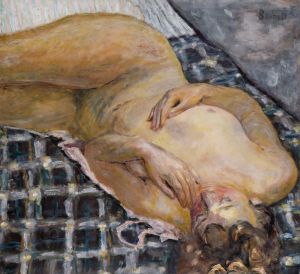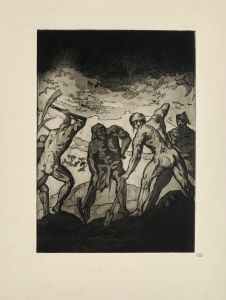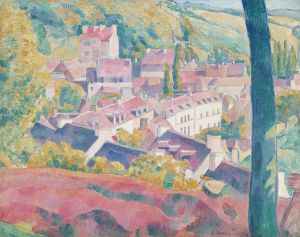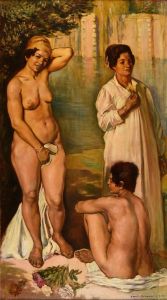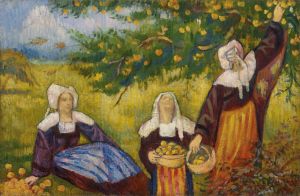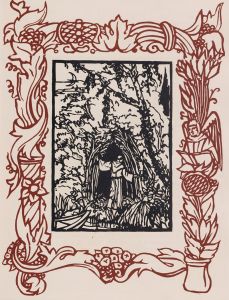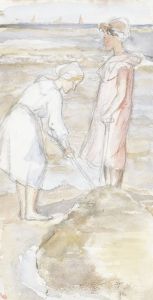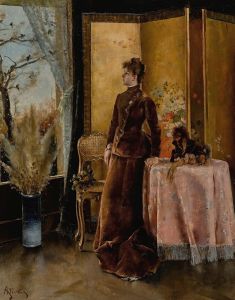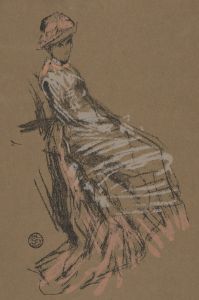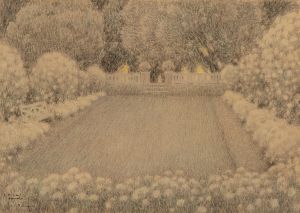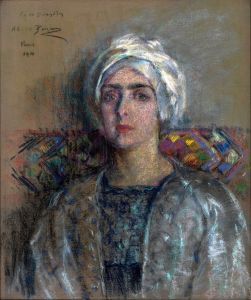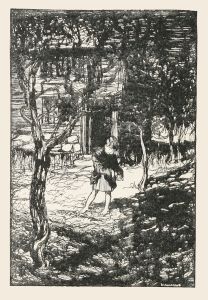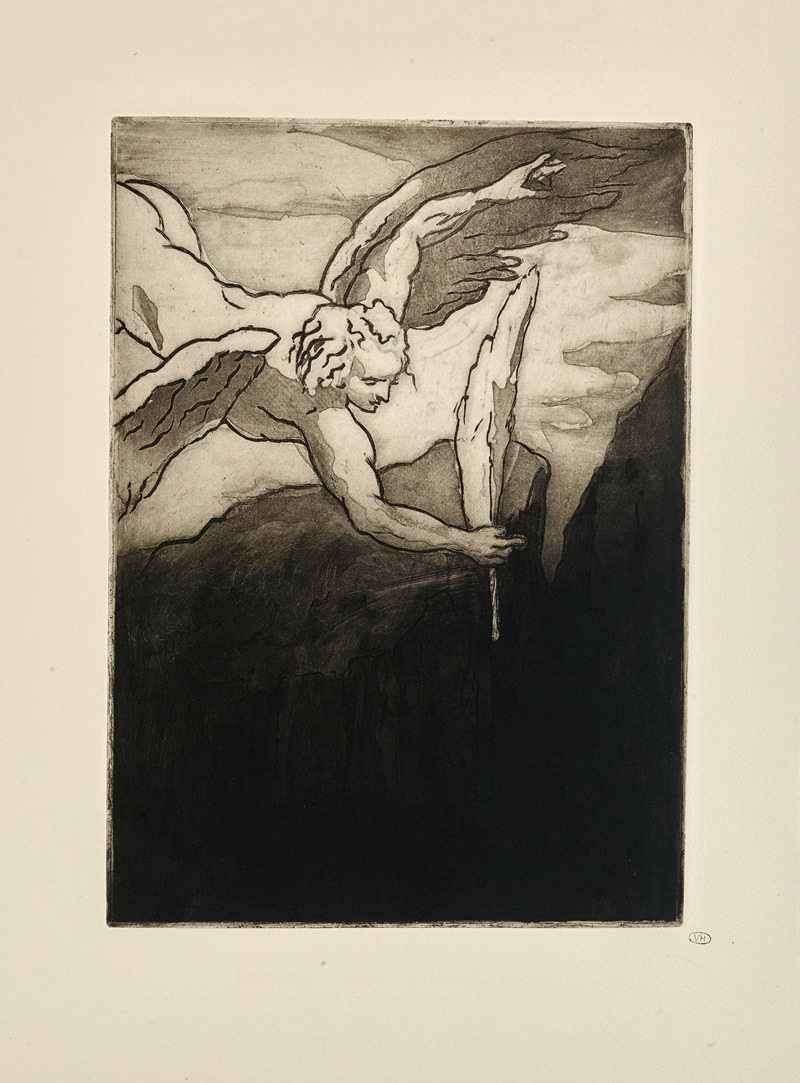
N° 6 – Une plume échappée à l’aile de l’archange Etait restée, et, pure et blanche, frissonnait
A hand-painted replica of Emile Bernard’s masterpiece N° 6 – Une plume échappée à l’aile de l’archange Etait restée, et, pure et blanche, frissonnait, meticulously crafted by professional artists to capture the true essence of the original. Each piece is created with museum-quality canvas and rare mineral pigments, carefully painted by experienced artists with delicate brushstrokes and rich, layered colors to perfectly recreate the texture of the original artwork. Unlike machine-printed reproductions, this hand-painted version brings the painting to life, infused with the artist’s emotions and skill in every stroke. Whether for personal collection or home decoration, it instantly elevates the artistic atmosphere of any space.
Emile Bernard was a French Post-Impressionist painter and writer, known for his significant contributions to the Symbolist and Cloisonnist movements. Born in Lille, France, in 1868, Bernard was a contemporary of artists like Paul Gauguin and Vincent van Gogh, with whom he shared a close relationship. Bernard's work is characterized by its bold use of color and innovative techniques, which often incorporated elements of symbolism and abstraction.
The painting titled "N° 6 – Une plume échappée à l’aile de l’archange Etait restée, et, pure et blanche, frissonnait" by Emile Bernard is one of his lesser-known works. The title, translated to English, means "A feather escaped from the archangel's wing remained, and, pure and white, it shivered." This evocative title suggests a work imbued with spiritual or mystical themes, which aligns with Bernard's interest in symbolism and the exploration of religious and philosophical ideas through art.
Bernard's style during the period when this painting was likely created was marked by a departure from the Impressionist focus on light and naturalism. Instead, he embraced a more structured approach, using bold outlines and flat areas of color, a technique known as Cloisonnism. This method was influenced by Japanese prints and medieval stained glass, which Bernard admired for their clarity and decorative qualities.
The painting's subject matter, as suggested by the title, may involve religious or spiritual symbolism, a common theme in Bernard's work. The imagery of an archangel's feather could symbolize purity, divinity, or a connection between the earthly and the heavenly realms. Bernard often infused his works with such symbolic elements, inviting viewers to engage with deeper philosophical and existential questions.
Emile Bernard's contributions to the art world extend beyond his paintings. He was also a prolific writer and theorist, penning numerous essays and articles on art and aesthetics. His correspondence with other artists of his time, including Gauguin and van Gogh, provides valuable insights into the development of modern art movements and the exchange of ideas among leading figures of the era.
Despite his significant influence, Bernard's work was often overshadowed by his more famous contemporaries. However, his innovative techniques and exploration of symbolism have earned him a respected place in art history. His paintings, including "N° 6 – Une plume échappée à l’aile de l’archange Etait restée, et, pure et blanche, frissonnait," continue to be studied for their unique contributions to the evolution of modern art.
In summary, Emile Bernard's painting "N° 6 – Une plume échappée à l’aile de l’archange Etait restée, et, pure et blanche, frissonnait" reflects his interest in symbolism and the use of bold, structured techniques. While specific details about this painting are limited, it exemplifies Bernard's broader artistic themes and his role in the development of Post-Impressionism and Symbolism.





